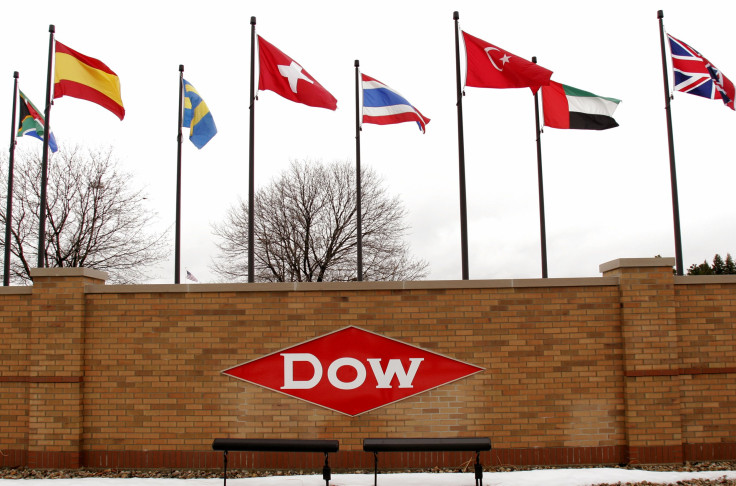With Dow-DuPont Talks Underway, The Agriculture-Chemical Sector Is Ripe For More Deals

A record $4 trillion year in mergers and acquisitions could soon see another mega-deal, as Dow Chemical (NYSE:DOW) and DuPont (NYSE:DD) reportedly mull a combination. Whether the two giants end up joining or not, analysts predict that more companies in the agricultural and chemical industries could find themselves tugged into the merger market.
The time is ripe. Muted global economic growth, a strong dollar and cheap corporate debt markets have encouraged combos that consolidate business lines and facilitate cost-cutting. And slumping crop prices have pushed farmers to dial back on orders, upping earnings pressures on chemical producers.
Meanwhile, activist hedge funds have thrown down the gauntlet for giants like Dow and DuPont, sprawling conglomerates whose diverse business lines and ample research budgets have become targets of activist interest.
"You could see Monsanto take another run at Syngenta," said Jeffrey Stafford, an analyst at Morningstar, of the failed merger attempt initiated by seed manufacturer Monsanto earlier this year.
“They’re all looking at consolidation,” said Jonas Oxgaard, chemicals analyst at Sanford Bernstein. “It’s a way to drive cost savings when the growth isn’t there.”
An Agriculture 'Trigger'
The Dow-DuPont deal would create a company with a combined value of nearly $120 billion, which would then split into three separate companies focused on agricultural, materials and specialty products, according to the Wall Street Journal, which first reported the deal.
It would be a monumental shift for the American chemical and agricultural industry. Founded in 1802 and 1897, respectively, DuPont and Dow have both achieved mainstay status in the U.S. economy, hauling in combined sales of $93 billion in 2014.
But company earnings have plateaued in recent years as demand has fallen in agriculture and industrial commodities, ratcheting up the pressure on executives at Dow and DuPont to streamline their businesses and strengthen core divisions.
Dow might have taken the first step toward consolidation. Sources told the Journal that Dow Chief Executive Andrew Liveris approached DuPont’s brand-new CEO, Edward Breen, as soon as he took the job last month, looking to make a deal with Dow’s agriculture division.
Oxgaard called the industrywide pressure to consolidate in agriculture the “trigger” for the deal, citing seed manufacturer Monsanto’s entreaties to merge with Swiss agricultural giant Syngenta earlier this year, a bid that eventually crumbled in August.
But the timing could help both companies simplify the rest of their diverse business structures. DuPont, which makes everything from detergents to food enzymes, made a statement last month in bringing in CEO Breen, an executive experienced in breaking up companies. Within weeks of taking the helm, Breen was shopping around DuPont’s agriculture business, which pulled in $11.3 billion in revenue in 2014.
For its part, Dow has pursued a spate of deals this year in the lead-up to talks with DuPont. “Everyone is talking with everyone,” Liveris said in October.
But at least in the agriculture sector, antitrust issues could prove an impediment to more deals, Stafford said. "If you put DuPont and Dow's agriculture business together, you're starting to bump into some regulatory concerns."
Activists At The Gate
It isn’t just economics that pushed Dow and DuPont to seek a tie-up. Despite their size and formidable legacies, the companies haven’t escaped the sway of activist investors bent on extracting greater value from lumbering corporate giants.
Dow found itself in the crosshairs of Daniel Loeb’s Third Point LLC hedge fund in 2014, after Loeb bought up $1.3 billion of the company’s shares and demanded that it spin off its petrochemicals division. Eventually, Dow added four new board seats and the parties agreed to a one-year ceasefire, scheduled to come to an end next week.
DuPont, meanwhile, spent much of 2015 fending off Nathan Peltz of Trian Fund Management, who narrowly lost a bid to install himself others on the company’s board in June. Peltz, who argued in a letter that “DuPont’s conglomerate structure is destroying value,” maintained his $1.5 billion stake in the company.
"They both won those battles with the activist investors initially," Stafford said. "Maybe this is the ultimate result and activist investors got the last word."
Dow and DuPont aren’t alone. Market intelligence firm ICIS reported earlier this year that 2014 set a record for activist campaigns in the chemical sector, with companies such as American Pacific and Calgon Carbon included. That interest represents a break from decades past, when Wall Street kept its distance from cyclical commodity chemicals.
According to Bloomberg, the number of potential agriculture-chemical deals approached a 12-year high in 2015. "There would be additional opportunities for further consolidation on the chemical side more broadly," Stafford said.
Dow and DuPont, however, could come to represent two of the biggest scalps shareholder activists have claimed in any sector in recent years. Activist hedge funds have increased their combined war chest by more than 25 percent annually since 2009, and now wield more than $120 billion in assets under management.
Closing Window
Mergers and acquisitions have reached a high-water mark in 2015 in large part because the window for taking out cheap corporate debt is soon closing. Corporate-debt issuers have delighted in near-zero benchmark interest rates, which investors expect to end later this month as the Federal Reserve mulls the first rate hike since 2006.
Eventually, higher interest rates will put a damper on dealmaking. But with the pace of monetary tightening expected to be moderate, analysts see no immediate drying-up of mergers and acquisitions in the works.
“An extended period of rising bond yields would likely dampen M&A activity,” said Baker & McKenzie global head of M&A Michael DeFranco in a recent note to clients. “However, a modest backup in interest rates would after a short period of time be inconsequential.”
With much more to be gained for shareholders in corporate mega-deals that there is to be lost in higher interest rates, investors can expect Dow-DuPont to set the pace for the industry.
© Copyright IBTimes 2024. All rights reserved.






















